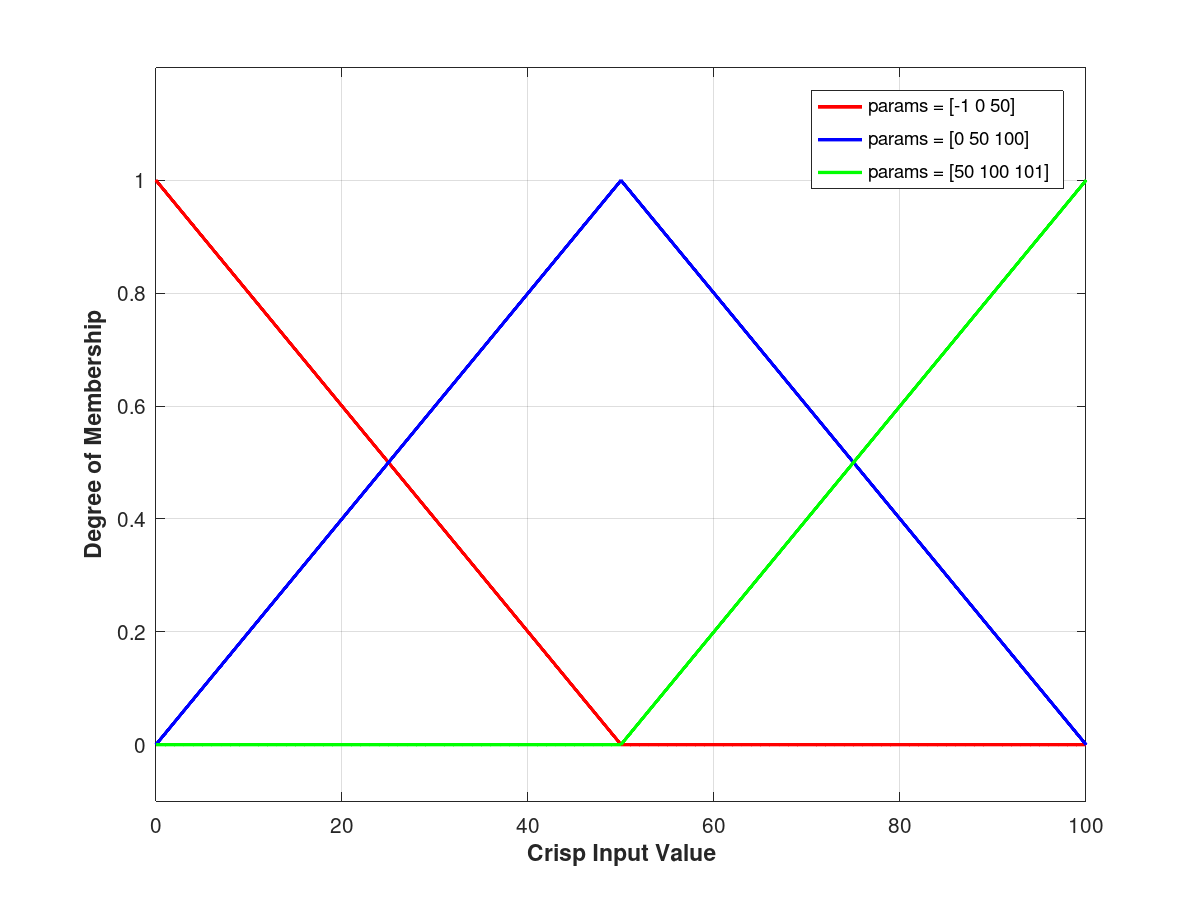- Function File: y = trimf (x, params)
- Function File: y = trimf ([x1 x2 ... xn], [a b c])
-
For a given domain x and parameters params (or [a b c]), return the corresponding y values for the triangular membership function.
The argument x must be a real number or a non-empty vector of strictly increasing real numbers, and parameters a, b, and c must be real numbers that satisfy a < b < c. None of the parameters a, b, and c are required to be in the domain x. The minimum and maximum values of the triangle are assumed to be 0 and 1.
The parameters [a b c] correspond to the x values of the vertices of the triangle:
1-| /\ | / \ | / \ | / \ 0----------------------- a b cTo run the demonstration code, type demo('trimf') at the Octave prompt.
See also: dsigmf, gauss2mf, gaussmf, gbellmf, pimf, psigmf, sigmf, smf, trapmf, trimf_demo, zmf.
Demonstration 1
The following code
x = 0:100;
params = [-1 0 50];
y1 = trimf(x, params);
params = [0 50 100];
y2 = trimf(x, params);
params = [50 100 101];
y3 = trimf(x, params);
figure('NumberTitle', 'off', 'Name', 'trimf demo');
plot(x, y1, 'r;params = [-1 0 50];', 'LineWidth', 2)
hold on;
plot(x, y2, 'b;params = [0 50 100];', 'LineWidth', 2)
hold on;
plot(x, y3, 'g;params = [50 100 101];', 'LineWidth', 2)
ylim([-0.1 1.2]);
xlabel('Crisp Input Value', 'FontWeight', 'bold');
ylabel('Degree of Membership', 'FontWeight', 'bold');
grid;
Produces the following figure
| Figure 1 |
|---|
 |
Package: fuzzy-logic-toolkit